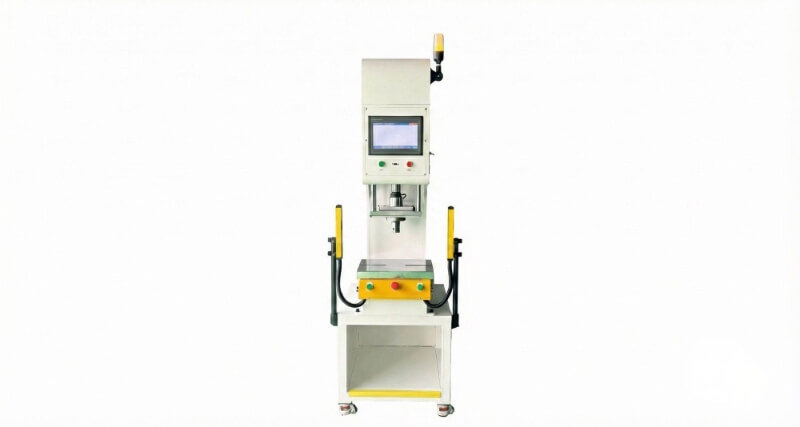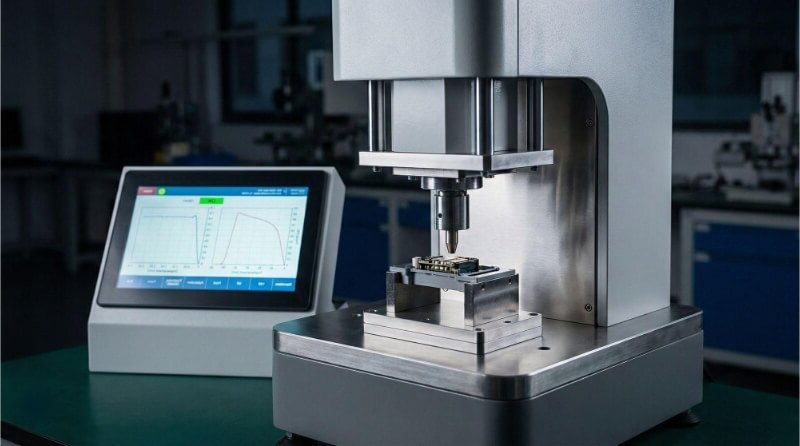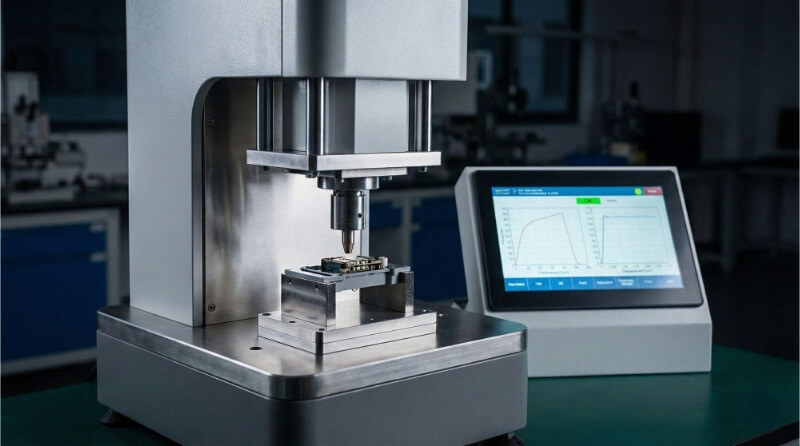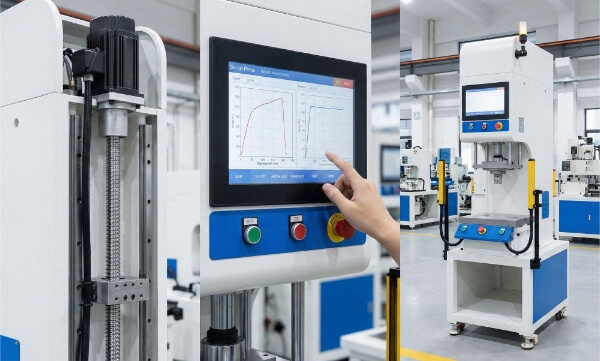Do you have questions about the difference between hot-dip galvanized and electro galvanized? This is a question I get asked by many of my clients. Understanding the differences is essential when choosing the proper process for your projects. Each method is unique in its benefits and applications. You can make better decisions by understanding these differences and ensuring the durability and longevity of your products.
The zinc is electroplated onto the steel, creating a thin, uniform, and smooth layer. On the other hand, hot-dipped steel is immersed in molten Zinc, resulting in a thicker and rougher coating. Both methods are effective in protecting steel against rust and corrosion. However, they have different applications and needs.
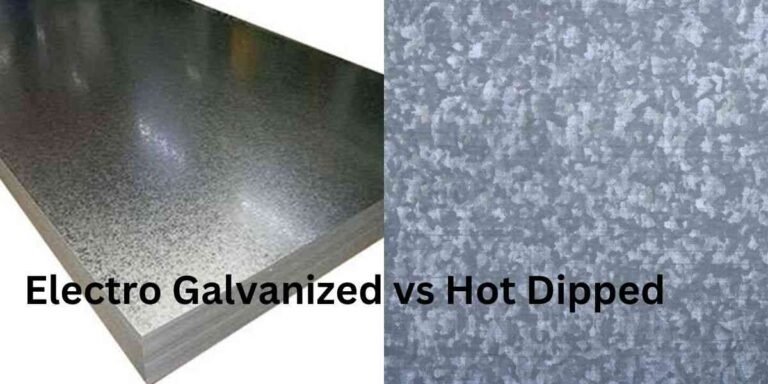
What is Electro Galvanization?
Definition and Process
The electrochemical process is used to apply a zinc coat on steel or iron. The metal is submerged in an electrolyte containing zinc ions. A current of electricity is passed through the electrolyte solution to cause the zinc to be deposited on the metal surface. The result is a uniform, thin, and smooth layer.
Key Characteristics
The precision and aesthetic appeal of electro galvanized coatings is well known. The coating is usually thinner than hot-dipped galvanization, resulting in a uniform, smooth finish.
Examples of Typical Applications
In industries that require high-quality finishes with tight tolerances, electro galvanization is often used. Automotive parts, electronic components, and household appliances are some of the most common applications.
What is Hot Dip Galvanization (HDG)?
Definition and Process
Hot-dip galvanizing involves immersing iron or steel into a molten zinc bath, typically heated to 450degC. The metal reacts with zinc to form a series of zinc-iron layers that are bonded to the base metal. This creates a thick and durable coating that offers robust corrosion protection.
Key Characteristics
Hot-dip coatings are more durable and thicker than electro galvanized ones. This method offers superior corrosion resistance in outdoor and harsh environments. The finish may be less smooth or rougher but will provide long-lasting corrosion protection.
Examples of Typical Applications
Hot-dip galvanization has many applications, especially when metal components need to be protected from harsh conditions. Applications include structural steel for construction and outdoor fixtures such as fences and railings.
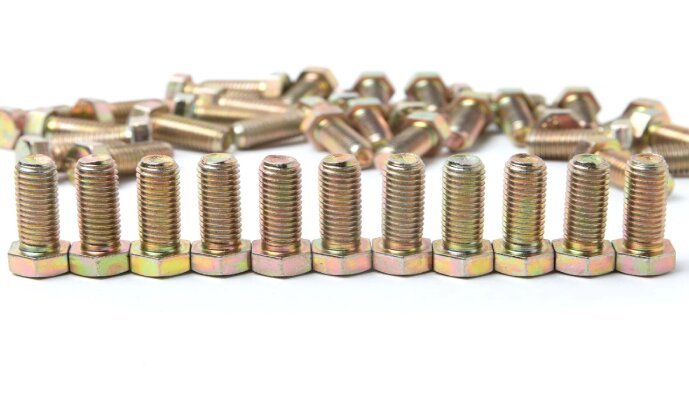
Electro Galvanized vs Hot Dipped: Key Differences
Process and Techniques
The electro galvanization process involves immersing the metal in an electrolyte containing zinc ions and applying an electric current. A thin and uniform zinc layer is deposited on the metal surface. Hot-Dip galvanization, on the other hand, immerses metal into a bath of molten Zinc, which causes a series zinc-iron alloy layer to form. This creates a thicker, more durable coating.
Surface Appearance
Electro galvanized finishes are uniform, smooth, and pleasing to the eye, which makes them ideal for applications that require a high level of aesthetic appeal. Due to the immersion method, hot-dip coatings have a rougher, less uniform finish.
Coating Thickness
Electro galvanization produces a coating that is thinner, more uniform, and has a smoother finish. Hot-dip galvanization results in a thicker layer, which offers enhanced durability and protection.
Adhesion and Bonding
The electrochemical process creates a strong bond between the coating and the metal. Hot-dip galvanization creates a robust metallurgical bond between the base metal and the coating, which results in a durable and robust layer.
Corrosion resistance
Due to its thicker zinc coat, hot-dip galvanization offers superior corrosion resistance in harsh outdoor environments. Electro galvanization provides moderate corrosion resistance and is suitable for indoor and less demanding environments.
Mechanical Properties
Hot-dip galvanization provides a thicker layer of protection that enhances the metal’s mechanical characteristics and makes it more wear-resistant. The original mechanical properties of electro galvanized metals are retained, which makes them ideal for applications that require precise dimensions and minimal weight.
Cost implications
Due to its controlled and precise application, electro galvanization tends to be more expensive. It also provides a higher-quality finish. Hot-dip galvanizing is more cost-effective when it comes to larger, bulkier objects.
Electro Galvanized vs Hot Dipped: Compare Detailed Comparison
Process Comparison
Electro Galvanization Process Steps
- Preparation: Remove any dirt or grease from the metal surface.
- Electroplating: Submerge metals in electrolyte solutions containing zinc ions.
- Application Current: Apply an electric current to the solution to deposit zinc on the metal surface.
- Rinsing & Drying: Complete the process by rinsing and drying the metal coated with the coating.
Hot-dip galvanization process steps
- Preparation: Cleanse the metal surface of contaminants.
- Fluxing: To prevent oxidation, apply a flux solution to the metal before galvanization.
- Galvanizing: Immerse the metal in a bath of molten zinc at around 450degC (842degF).
- Cooling & Inspection: Remove metal from the bath, cool it, and inspect the coating quality.
Differential Technical Terms
- Precision: Electro galvanization is a precise, controlled process that results in a smoother, thinner coating.
- Thickness: Hot-dip zinc galvanization produces a thicker and more durable coating due to the immersion into molten Zinc.
- Bonding: Electro galvanization produces an electrochemical solid connection, while hot-dip zinc-iron alloy layer galvanization forms a metallurgical relationship.
Performance and Durability
Corrosion resistance in various environments
- Electro Galvanized: Offers moderate corrosion resistance and is suitable for mild indoor environments.
- Hot-Dipped galvanized: Provides superior corrosion resistance and is ideal for harsh outdoor environments.
Mechanical Strength and Flexibility
- Electro Galvanized: Maintains the metal’s mechanical properties and is suitable for applications that require precision.
- Hot Dip Galvanized: Increases metal durability and strength.
How long will the product last, and what maintenance is required?
- Electro Galvanized: This product requires periodic maintenance to maintain its protection, mainly when used in more corrosive environments.
- Hot Dip Galvanized: Has a long lifespan and requires minimal maintenance.
Applications and Suitability
Ideal Uses for Electro-Galvanized Products
- Automobile parts
- Electronic components
- Household Appliances
- Fasteners, small hardware
Uses of Hot-Dipped galvanized products
- Structural steel in construction
- Fences and railings are outdoor fixtures.
- Piping systems
- Large-scale infrastructure projects
Environmental and Safety Considerations
Electro galvanization and the Environment
- It produces less waste and emits fewer emissions than hot-dip galvanization.
- If appropriately managed, the electrolyte used can be safe.
Environmental Impact of Hot Dip Galvanization
- Energy consumption is higher due to the requirement to maintain a zinc-molten bath.
- More waste products are generated that need to be appropriately disposed of.
Safety Concerns and Regulations
- Electro Galvanization: Handling and disposal regulations for electrolyte solution must be followed to prevent contamination.
- Hot Dip Galvanization: Worker safety is paramount to avoid burns or inhalation of fumes from zinc during the galvanizing procedure.
Electro Galvanized vs Hot Dipped: Quick Comparison
This table provides a concise comparison of electro-galvanizing and hot-dip galvanizing to help you make the right choice.
| Comparison Criteria | Electro Galvanization | Hot-Dip Galvanization |
|---|---|---|
| Process Steps | Electroplating zinc ions in an electrolyte solution using an electric current | Immersing metal in molten zinc, forming zinc-iron alloy layers |
| Surface Appearance | Smooth, uniform, aesthetically pleasing | Rougher, thicker, and more rugged |
| Coating Thickness | Thinner and more consistent | Thicker and more durable |
| Adhesion and Bonding | Strong electrochemical bond | Strong metallurgical bond |
| Corrosion Resistance | Moderate corrosion resistance, suitable for indoor or mild environments | Superior corrosion resistance, ideal for outdoor and harsh environments |
| Mechanical Strength | Retains original mechanical properties, suitable for precise applications | Enhances metal strength and wear resistance, ideal for heavy-duty applications |
| Cost | Higher cost due to precise application process | More cost-effective for large and bulky items |
| Typical Applications | Automotive parts, electronic components, household appliances, fasteners | Structural steel, outdoor fixtures, piping systems, large-scale infrastructure projects |
| Environmental Impact | Produces less waste and emissions | Higher energy consumption, more waste byproducts |
| Safety Considerations | Requires proper handling and disposal of electrolyte solutions | High temperatures and molten zinc bath require stringent safety protocols |
Electro Galvanized vs Hot Dipped: The Pros and Cons
Electro Galvanized
Pros
- Smooth Surface: This coating is uniform and aesthetically pleasing, making it ideal for applications concerned with appearance.
- Precision: This coating is thinner and more controlled thickness, making it ideal for parts with tight tolerances or fine details.
- Moderate Resistance to Corrosion: Suitable for mild indoor environments and climates, protecting against corrosion and rust.
- Less environmental impact: Produces less emissions and waste than hot-dip galvanization.
- Immediate handling: Electroplating allows immediate handling of coated metals and further processing.
Cons
- Higher cost: Due to the exact application process, it is generally more expensive.
- Lower Durability: The thinner coating might not provide enough protection in harsh environments or outdoors.
- Periodic Maintenance: This product requires periodic maintenance to maintain protection, mainly when used in more corrosive environments.
- Limited Thicken: It is impossible to achieve the thick coatings that are possible with hot-dip zinc, limiting its use for heavy-duty applications.
Hot Dipped
Pros
- Superior Resistance to Corrosion: Excellent in outdoor and harsh environments. Offers robust protection against corrosion and rust.
- Durability: The thick, tough coating increases the metal’s mechanical resistance, making it wear-resistant.
- Cost Effective: Large and bulky items are generally more cost-effective, offering excellent value to projects that require durable protection.
- Longevity: Has a long lifespan with minimal maintenance. This is especially true in challenging conditions.
- Simple Process: This process is suitable for large-scale projects, such as infrastructure and structural projects.
Cons
- Rough Surface: A thicker coating will result in a rougher finish, which is unsuitable for applications requiring a refined look.
- Uneven Coating: The immersion method can produce a less uniform finish than electro-galvanization.
- Greater Environmental Impact: Creates more waste products and emissions that require proper disposal and management.
- Safety Concerns: High temperatures and molten zinc baths pose serious safety concerns to workers.
- Distortion Potential: Heat involved in the process may distort thin or delicate metal components.
Conclusion
The galvanization process you choose – electro galvanized or hot dipped – depends on the project and its needs. Understanding the key differences can help you make an informed decision to ensure that your metal products will meet your needs. You can get the best results by choosing the correct galvanizing process.
Do you need a reliable sheet metal parts manufacturer? Shengen is the place to go. We specialize in sheet metal laser cutting, bending, surface finish, and CNC Machining. Reach out to Shengen Today and seek help from professionals!
FAQ
What is better: electro galvanized steel or hot-dipped steel?
Your needs will determine the choice. Electro galvanized has a smoother surface and is suitable indoors with moderate corrosion resistance. Hot dipped is more robust and more suitable for harsh or outdoor environments.
Can electro galvanized be used outdoors?
For mild or indoor environments, electro galvanized coatings are adequate. Hot-dipped coatings, however, are better for harsh environments or outdoor use.
What metals can be electro galvanized?
Typically, electro galvanized coatings on steel and iron are applied. This process uses an electrochemical technique unsuitable for all types of metal. Electrozinc plating is not usually done on non-ferrous metals like aluminum or copper. The process and adhesion of zinc are explicitly designed for ferrous metals.
More Resources:
Hot-Dip Galvanization Explained – Source: Xometry
Environmental Impact of Galvanization – Source: Bruynzeel
Galvanization Standards and Regulations – Source: Galvanizeit
Hey, I'm Kevin Lee

For the past 10 years, I’ve been immersed in various forms of sheet metal fabrication, sharing cool insights here from my experiences across diverse workshops.
Get in touch

Kevin Lee
I have over ten years of professional experience in sheet metal fabrication, specializing in laser cutting, bending, welding, and surface treatment techniques. As the Technical Director at Shengen, I am committed to solving complex manufacturing challenges and driving innovation and quality in each project.

